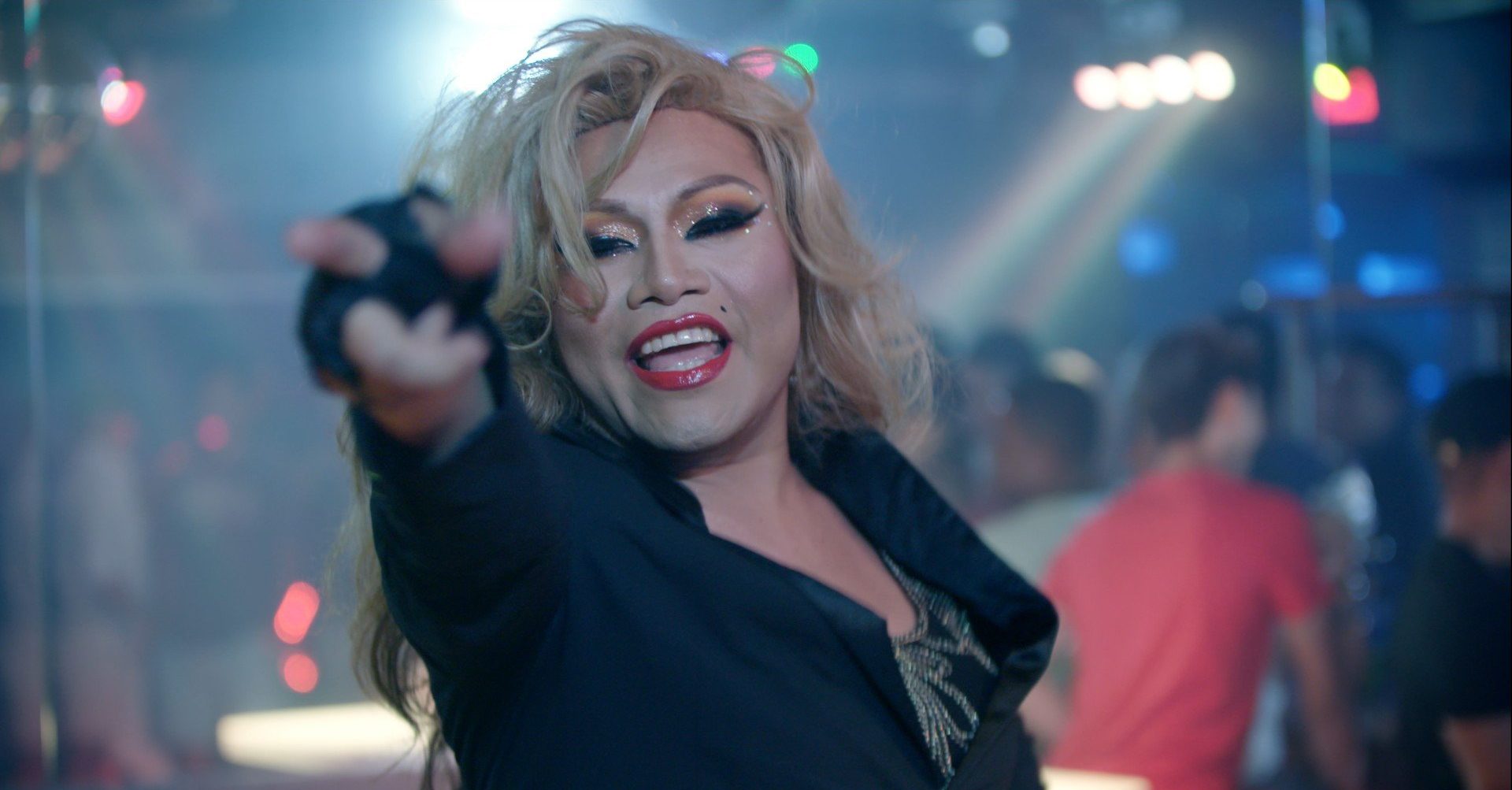Nicola Mai’s newest film Caer (Caught) follows two trans Latina sex workers, Rosa and Paloma, as they navigate transphobia, immigration systems and the police in an endless game of cat and mouse. The film, which recently screened at the Vancouver Queer Film Festival, is half documentary and half fiction; while Rosa and Paloma (played by Jennifer Orellana Delgado and Ashley Rendon respectively) are fictional characters, they are based on the real-life experiences shared by members of the Colectivo Intercultural TRANSgrediendo (CITG), a New York-based community organization fighting for the rights of migrant trans Latina women and non-binary people.
The film moves seamlessly between fiction and documentary. Some people featured in the film aren’t playing characters at all, allowing themselves to be filmed in the bars, dressing rooms and community centres where they live their lives. Spliced into the narrative film are scenes of the collective members watching and reacting to the staged footage, discussing their thoughts on everything from character development to line delivery. In showing so much of the process itself, the documentary becomes, in part, about how a community tells its story.
The fourth wall in Caer (Caught) is broken early: the demanding “husband” we just saw domineer his wife now sits, out of costume and out of character, on a couch, getting teased for delivering his lines a little too well. “I would beat him with a pan,” Delgado whispers. Viewers don’t get to rest in the safety of the community centre couch for long though—the tense scene that follows stars Delgado, now in character as Rosa, getting arrested, caught in her own home by an undercover cop.
The film is a collaborative effort between filmmaker Nicola Mai and CITG. Mai, a sociologist and anthropologist for over 20 years, now works at the University of Newcastle in the United Kingdom, focusing on labour migration and the ways social stigmas impact experiences of exploitation. In an interview, he explains that the people he was working with during his research told him about how, in some cases, sex work was a way for migrant workers to avoid being exploited in a mainstream job.
“I was very interested in this paradox, because the expectation is that sex work is a last resort, and actually this was not the case,” says Mai, who has made two previous films about sex work. He tells me that his relationship with CITG began in the context of a large research project that was, in part, looking at how government and “humanitarian” interventionist projects ended up making sex worker communities the targets of increased control and harassment.
On first approaching the collective about a potential collaboration, Nicola said his question was, “If you were to make a film about your life, what would the film be like? What would be the story, who would be a character and what would happen to them?”
The result is a rare and beautiful example of genuine collaboration. Every actor is either a member of the collective or a friend of the community; the lines delivered were written to reflect their own experiences navigating the ongoing harassment migrant sex workers face from the police and the state. The editing was also done as a group; viewers of the finished doc see glimpses of conversations on the evolution and motivation of the characters. “Some of the people in the film would tell me, ‘Well, you should tell us what to do,’” Mai says of the process. “The expectation is that a film director directs. But I would say, ‘This is our film. I can give some ideas, but we have to decide together.’”
“We’re making a film,” Rendon says in the film as she discusses the project with her peers, “in which we’re telling the truth about our lives as trans women. Our backgrounds are different, but we’ve all lived something similar. It’s not fiction. It’s real.” The result is both intimate and complicated, escaping the trappings of so many films about sex work by showing joy, love and celebration alongside the struggle to live freely. Characters are shown looking beautiful and laughing in dressing rooms, congratulating each other on their successes and building relationships within their communities. Their lives are rich and complicated, and span far beyond the arrests shown and traumatic events explained.

As trans Latina sex workers, the characters’ lives are politically charged whether or not they want them to be. Major legislative changes in the United States, like SESTA/FOSTA (laws classifying the promotion of sex work online as sex trafficking, effectively criminalizing it) and the demise of Backpage.com, a now defunct website that was used by sex workers to advertise and promote themselves, are referenced throughout the film.
The characters frequently discuss strategies to advocate for their legal rights. In one scene, community members and organizers gather for New York City’s annual Slut Walk, painting signs advocating for their rights as trans women and putas (“whores”). The collective strategizes amongst themselves before taking their signs to the streets; it is decriminalization, not legalization, that is the goal. Legalization of sex work, as they discuss in the scenes leading up to the protest, would only invite state regulation, pushing undocumented migrant workers farther underground and exposing an already vulnerable community of Latina trans women to more police and state harm.
“Only someone who understands will help me overcome this.”
Caer (Caught) ends with a dedication to Lorena Borjas, a longstanding community organizer and the founder of CITG, who is featured in the film. Lorena “plays” herself in both the narrative and documentary elements of the film, providing legal counsel and comfort to Paloma and other characters. In the warmth of her community centre office, Borjas explains to Paloma that she herself has been through much of what Paloma is experiencing; the trauma of jail time, transphobia and persecution aren’t foreign to her. The depth of Lorena’s impact is especially noticeable in contrast with the (cis, white) immigration officer Paloma meets with throughout the film. While the bureaucrat provides a sympathetic ear, it is clear the officer cannot relate to much of what Paloma tells her; their interactions are stiff and uncomfortable, underscored by a damp silence pervasive in government buildings. As Paloma tells Borjas in one scene, “only someone who understands will help me overcome this.”
Tragically, Borjas lost her life due to COVID-19 in March 2020, but her impact on and the care she had for her community is clear in every scene she is featured in. Her warmth and legacy live on in the lives she touched and in the Lorena Borjas Community Fund, which supports the LGBT Center Intercultural Collective Inc. (which is affiliated with CITG).
Caer (Caught) is a true feat, both in its skillful blend of narrative fiction and documentary and in its thoughtful and honest portrayal of real (or semi-fictional) experiences. Witnessing true collaboration in the documentary genre is a rare treat, and Caer (Caught) exemplifies why it is not only worth the effort, but vitally important.


 Why you can trust Xtra
Why you can trust Xtra


